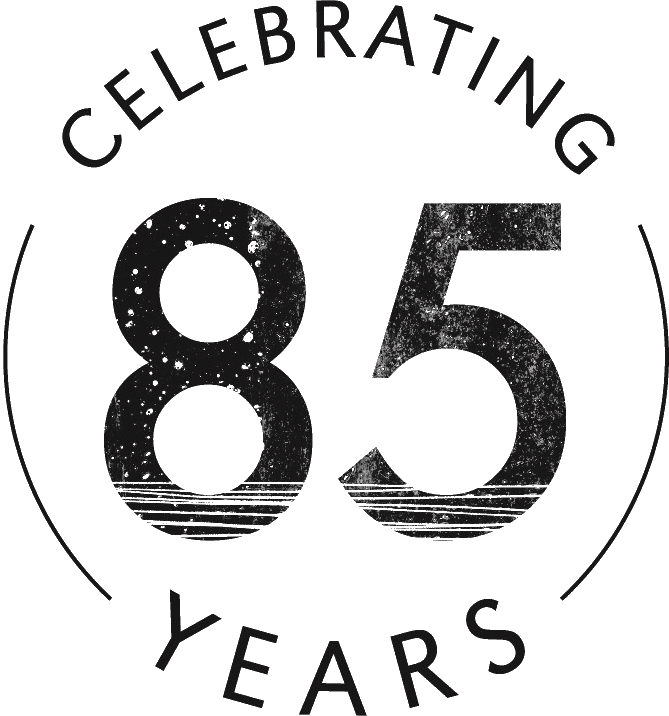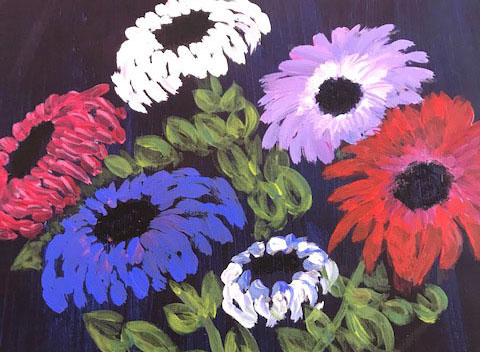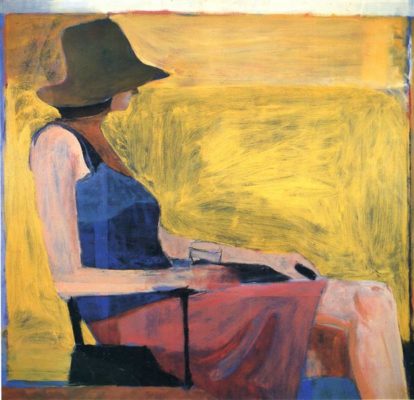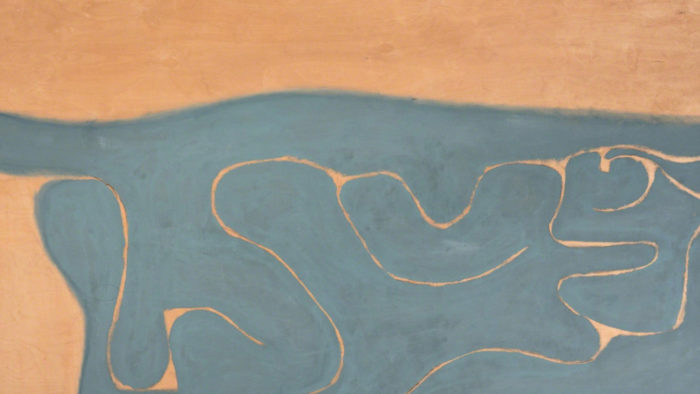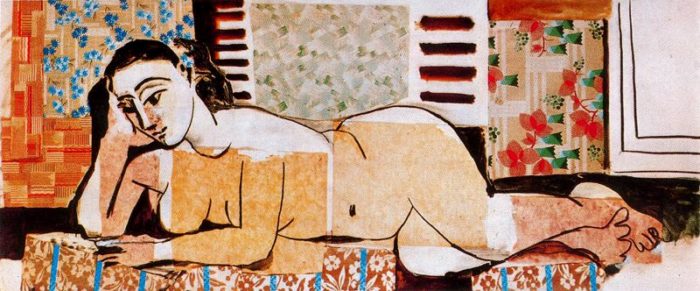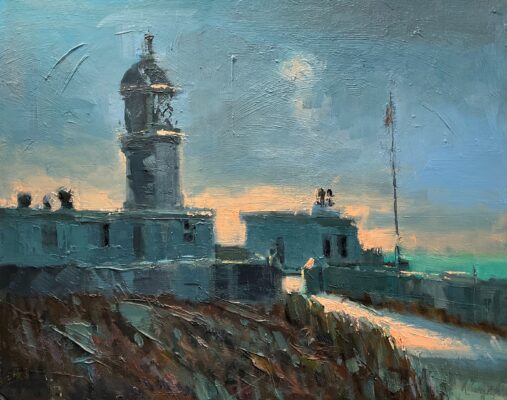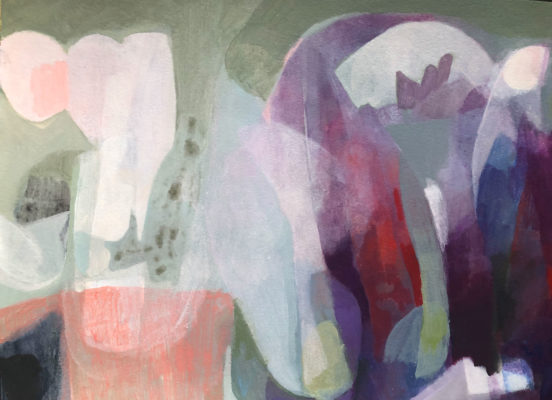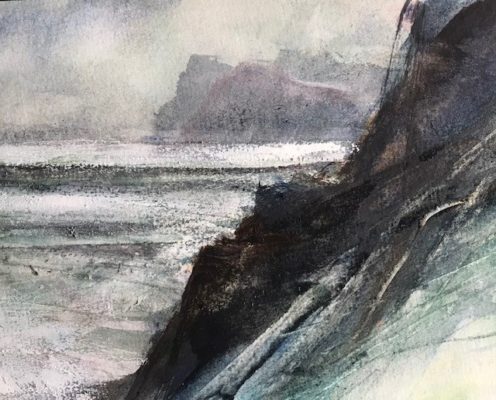Course details
Freshen up your approach to botanical drawing and painting, exploring the wonders of botanical forms from the micro to the macro.
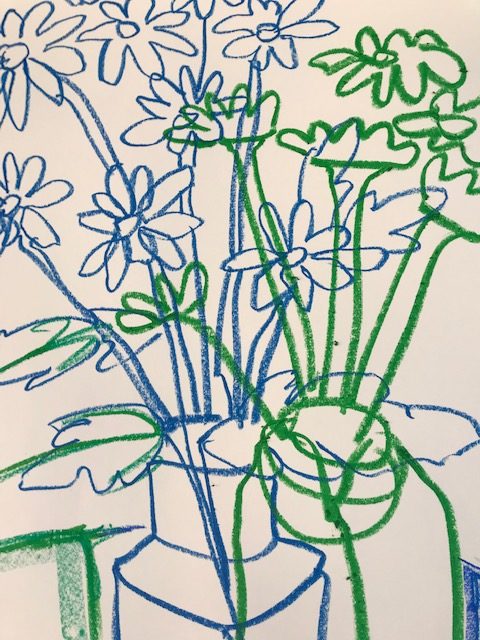
Harnessing both the power of black and white monochrome and intense exhilarating colour, artists Liz Luckwell and Hilary Jean Gibson, introduce you to new ways of capturing the buds and blooms of Cornwall in Spring.
The course begins with a series of guided exercises designed to help loosen your approach to materials and encourage experimentation. Over the following days, you’ll explore a range of techniques while working from a variety of plant forms—both fresh and dried—brought into the studio. Weather permitting, a few hours will be spent drawing the native flora found around St. Ives, offering a chance to observe and respond directly to plants growing in their natural habitat.
Continue to develop the full range of studies produced throughout the course—refining and expanding them through a more fluid and expressive approach on large sheets of paper. Through a process of ‘listening’ to the materials, you’ll gain confidence and learn to work in a looser, more experimental and versatile way using inks and resists. This course opens the door to a fresh understanding of botanical drawing—revealing how dynamic, immediate, and creatively rich it can be.
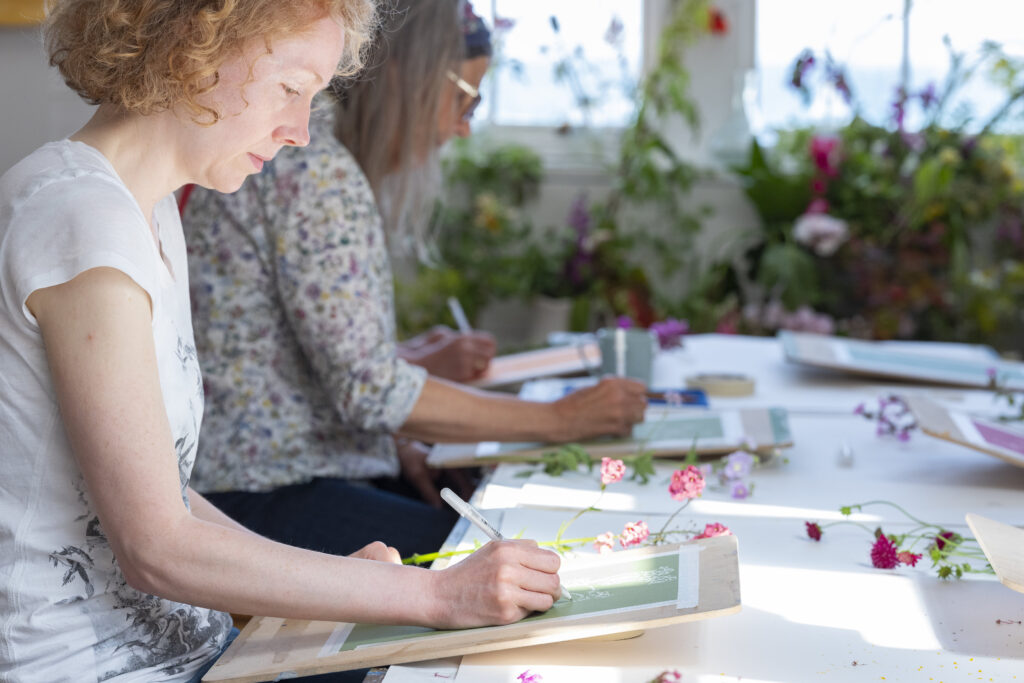
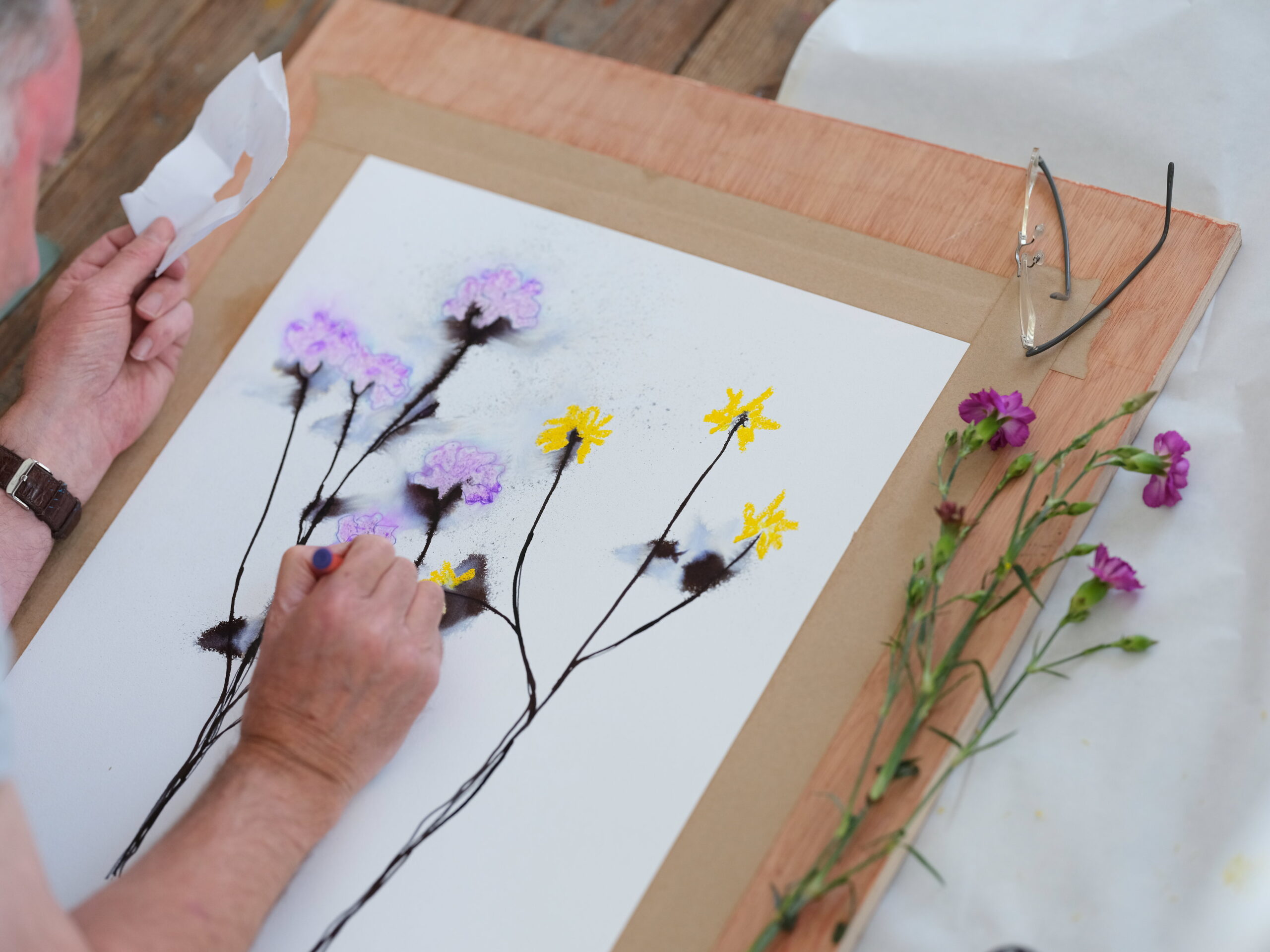
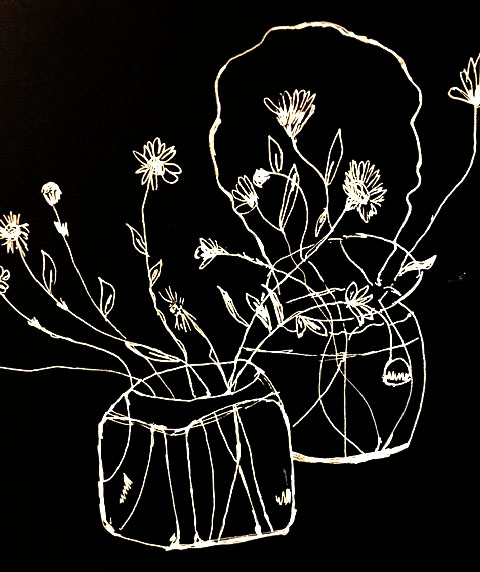
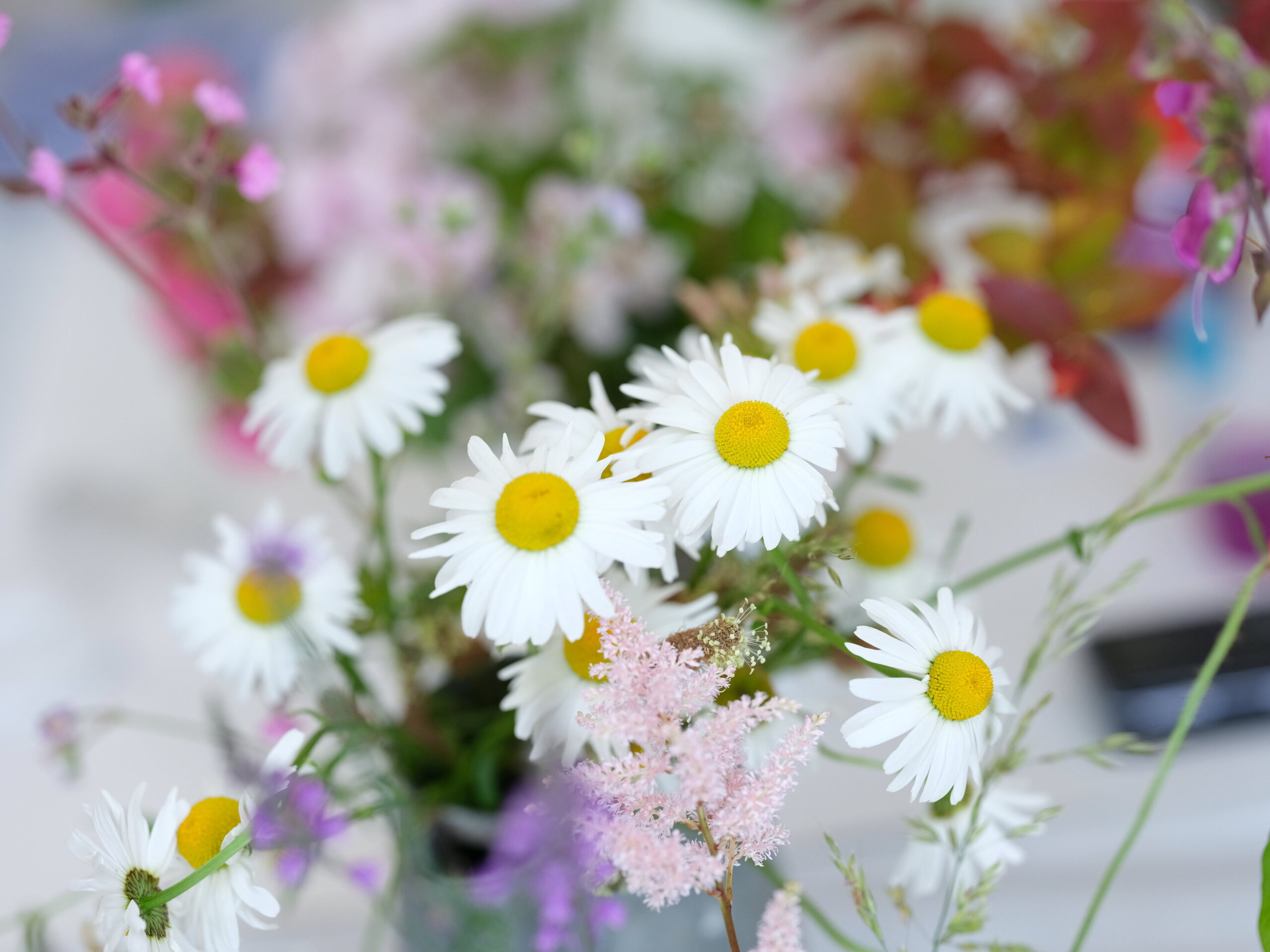
Day to day plan
This is a rough indication of what to expect over the course. However sometimes the structure of the days may alter depending on the nature of the group and weather.
Day 1
Begin the day with Liz Luckwell, who will introduce you to a series of guided exercises that aim to loosen your approach to materials by exploring various techniques of drawing and mark-making.
Compose arrangements of plants and flowers with an aerial view looking down and experiment with viewfinders to help to select parts of the compositions so you can zoom in and focus.
Day 2
Weather permitting, venture out on the coastal path with Hilary Jean Gibson, to observe and respond to the local flora in a sketchbook. Back in the studio, develop your sketches, to create drawings and studies using pencil, coloured inks and water-soluble pencils.
Day 3
Liz will encourage the development of your sketches and observations from days one and two. Consider the use of scale and transfer your sketches onto large sheets, exploring the fluid and experimental qualities of inks and resists.
What will I learn?
- An approach to simplifying botanical drawing so you capture the essence.
- A more intuitive approach to still-life drawing and painting.
- Approaches to help you successfully scale up your work.
- Encouragement to look more closely at the world around you.
- Inspiration for working with botanical drawing in experimental ways.
Who would this course suit?
This course is ideal for artists and nature lovers—both emerging and experienced—who want to explore a fresh, dynamic approach to botanical drawing. Whether you’re used to working in a more controlled, detailed style or are eager to loosen up your technique, this course offers a chance to reconnect with nature working both outdoors and in the studio to capture the vibrant flora of Cornwall in spring.
Taught by
What to Bring
Our studios are fully equipped and we provide you with all the materials you need for your course. However, if you have a favourite set of brushes or any specialist materials that you would prefer to use, please bring them with you.
Timings and Breaks
The first day starts at 10am and finishes at 4.30pm, please aim to arrive ten to fifteen minutes before the start time.
All course days after that start at 9.30am and finish at 4pm and there will be an hour for lunch. There are plenty of nearby places to eat and we will serve tea and coffee at break times during the day.
What our students say
Very well structured with excellent tuition and overall a wide, diverse, and interesting course.
Explored a range of techniques in a safe creative environment nurtured by the school itself and Liz’s deft personal guidance.
Liz is a great teacher. We explored lots of different mediums and were encouraged to develop our own style. A fabulous 3 days.
FAQs
Studio Courses
Can I bring my dog?
The studios are busy places with lots of equipment and not suitable for bringing a pet dog. We can accommodate assistance dogs with prior notice so we can make suitable adjustments. If you wish to bring an assistance dog please call 01736 797180 or email [email protected]
How can I get help in choosing a course?
Our friendly expert staff are always happy to discuss your needs and our courses in more detail to help you with your decision. Please call us on 01736 797180
How do I get my work home?
Tutors have special techniques for transporting oil paintings and for our 3 day courses we will give you a plastic folder with a handle. These are also available to purchase for £3.50 or do bring a portfolio.
Please note: For the course Bigger, Bolder, Braver with Boo Mallinson, we will provide a large A1 size plastic folder for your work but please consider how you will be able to transport the larger canvases home safely before signing up for the course as we will not be able to store large paintings in the studio. On this course you will be painting on a 50cms x 50cms and a 1m x 1m canvas alongside smaller pieces.
For international students we are happy to arrange transportation of your work back home, postal costs will be borne by you.
What do I need to bring?
Absolutely nothing! All materials and aprons are provided although some people do like to bring their own set of brushes.
What do I do for lunch?
Courses allow an hour’s break for lunch and there are numerous places nearby or you are welcome to bring a packed lunch into the studio.
What times do courses run?
Most of our courses start at 10am and end at 4.30pm on the first day. Subsequent days we start at 9.30am ending at 4pm.
Short workshops start at 10am in the Summer and 9.30am/ 1.30pm during September festival
Do you have to be experienced to come to the School?
The School is a very friendly and welcoming place for all ages and experience. Our drop-in life classes and August half-day workshops are ideal for those wanting to have a go for the first time. Most of our longer courses are also fine for novices as class sizes are small and our tutors are experienced in managing varying abilities within a group.
If any of the courses do need a bit of experience we flag this up on the website.
Booking a Course
How can I reserve a place?
We will hold a provisional reservation for 24 hours if you give us a call whilst you find accommodation. Otherwise please book online or by telephone 01736 797180.
You can reserve a place with a £100 deposit; balance is due 12 weeks before course start date.
About St Ives
Where do I park?
The nearest long stay public car parks are the Island and Barnoon Long Stay Car Park, both a 5 minute walk away. In the peak summer months it may be easier to park at Trenwith Car Park by the leisure centre and walk down into town. If you don’t fancy the walk up the hill at the end of the day there is a shuttle bus which runs from outside the cinema.
How do I get there?
Public Transport: If you are coming from further afield the main train line runs into St Erth which is a 15 min taxi ride away or you can take the St Ives Bay Line which runs approx. every 30 minutes. The School is a 10 minute walk from St Ives station.
Driving: M5 will take you to Exeter where we recommend that you take the A30 across Bodmin Moor and into Cornwall. After passing Hayle, leave the A30 at St Erth roundabout for St Ives. Turn right at the second roundabout. This road will take you through Lelant and Carbis Bay into St Ives.
Where can I stay?
St Ives has a huge selection of hotels, guest houses and self catering accommodation to choose from. Please browse the art holidays St Ives section on our website and give us a call if you would like any help.
